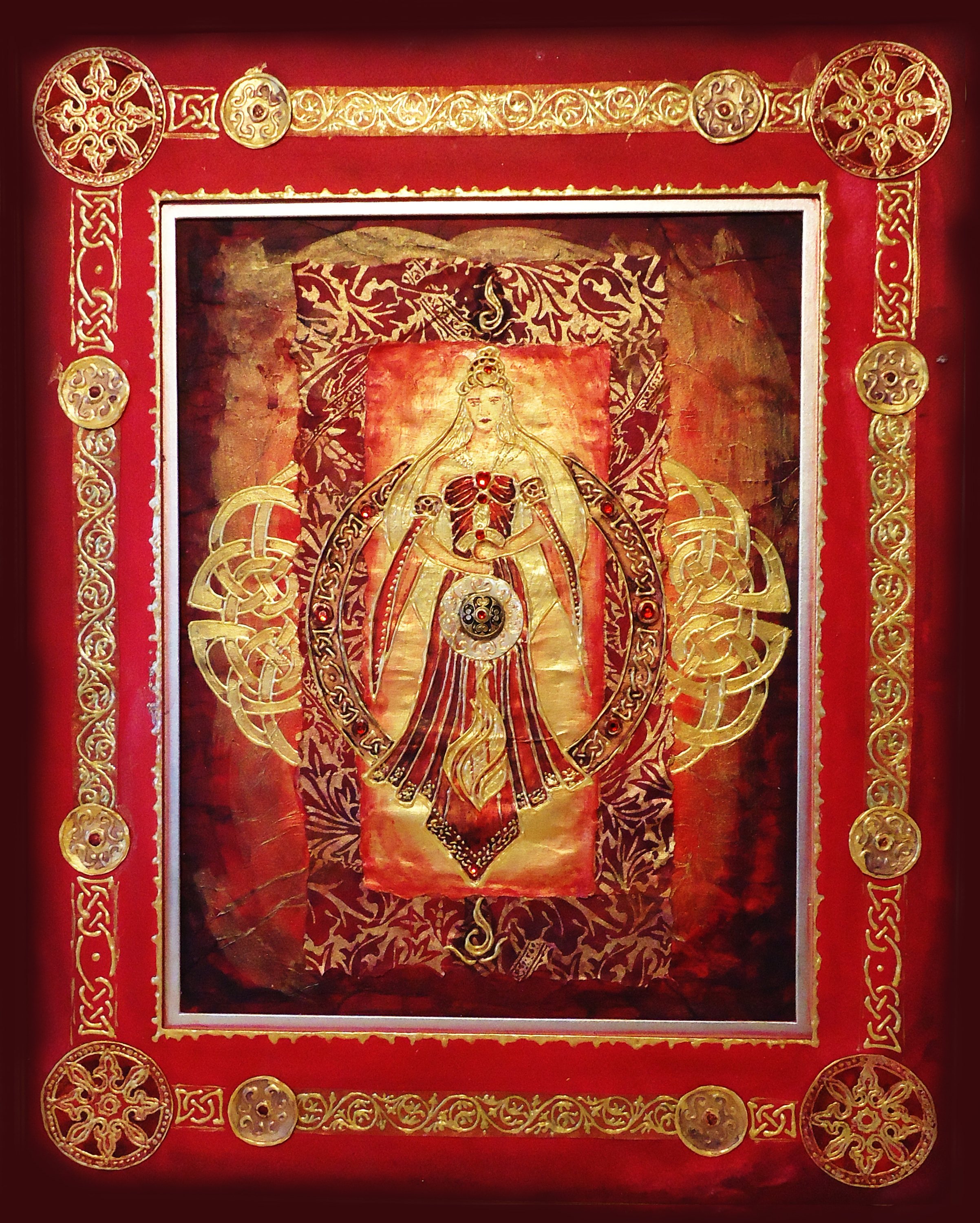Ritual Facilitation: Designing Processes
 The most current issue of Circle Magazine is themed entirely on rituals. It’s a great read with lots of tips and tools for ritual facilitators. My own article, Ritual Facilitation: Designing Impactful Rituals, ended up being way too long for the magazine, and so I pulled out a section of it and just created an entire article from that piece. Thus, this article will perhaps have more context if you read the article in the magazine. Below I focus on the specifics of designing processes and how this connects to the design of ritual.
The most current issue of Circle Magazine is themed entirely on rituals. It’s a great read with lots of tips and tools for ritual facilitators. My own article, Ritual Facilitation: Designing Impactful Rituals, ended up being way too long for the magazine, and so I pulled out a section of it and just created an entire article from that piece. Thus, this article will perhaps have more context if you read the article in the magazine. Below I focus on the specifics of designing processes and how this connects to the design of ritual.
In many of my articles on ritual facilitation I talk about designing rituals rather than writing them; design means to plan. I also talk a lot about the flow of rituals and how each piece of a ritual layers and prepares people for the next piece. What might surprise you is that some of my own background as a web designer and usability consultant impacts how I approach designing rituals.
Process and Space Design
Let’s assume you’ve got a ritual planned, but you are looking at a few complicated logistics. Or, let’s say you’re taking a big step back from how you usually do rituals and rethinking things to try and make your rituals more accessible, more impactful, or just more effective.
There are some secular processes that can help to give you some good examples of understanding how process, flow, and the space where the ritual takes place, all impact each participant’s experience of the ritual. While you might not think that these secular processes have much to do with ritual, it’s important to remember that processes are pretty universal. We humans are going to engage in processes in similar ways whether they are religious are secular. And if you understand processes of any kind, you’ll be a better ritual designer.
This might seem a bit nerdy, but trust me–this will help you design better rituals.
Going To the Store
Think about the last time you went to a larger store like a grocery store or department store. In many stores there is an open space near the entrance. Store designers often refer to this as a “landing zone.” What designers and anthropologists have found in observing people in stores is that people often like to stop and orient themselves when entering a large store. Stores that are too crowded in the entrance way make this difficult, and people feel uncomfortable, even though they can’t necessarily articulate why.
Similarly, stores that try to pack the aisles in too tight also make people feel vaguely uncomfortable. Stores that have plenty of space between aisles make people feel more comfortable. Often store owners will try to cram as many products into the space as they can, but the truth is that when people feel more comfortable, they stay longer and buy more.
I can think of one store where the underwear and sock aisles are all packed so close together that I can barely walk through them. I hate shopping there; that vague sense of discomfort is enough to make me avoid shopping at that store, even if they have good sales on products I need.
While rituals don’t have aisles packed with products for sale, what’s important is to note that the design of the space, the shape of the room, whether or not there are enough chairs, or other aspects of the design of the process of the ritual itself can make people uncomfortable. It’s not about dealing with difficult subject matter, it’s a matter of logistics. Can people sit if they need to? Are there enough chairs? Is the room cramped?
I often shop at thrift stores, but one of the significant challenges that I face is the perfumey smell of the store. All the clothes in the store seem doused in perfume and cologne, which makes my face itch. I’m pretty sensitive to scent. Thrift stores are the only place I can buy frames for my artwork, so I suffer through it, but it’s another example of how something uncomfortable can totally transform someone’s experience.
Do your rituals use a lot of scent? Are you burning sage or other things that people might be allergic to?
In essence, what we’re looking at here are the things that make people uncomfortable. Observing people and how people behave can give you a lot of clues. What is particularly useful in observing processes is finding out key points of pain and irritation. If people aren’t comfortable, they won’t shop at your store, or attend your rituals.
Discomfort and Challenge
I should note that there’s a difference between designing a ritual where you ask uncomfortable questions–such as shadow work–and a ritual where people are uncomfortable because they are standing around bored for a half hour or more in the cold waiting for their turn at an altar. Or a ritual where people are stumbling around in the darkness trying to find their way to the ritual area. Or one of my personal pet peeves, trying to find my way to a ritual or festival at a park shelter when there were vague directions posted, and there is no signage.
In essence, if you want to take people into a deep, spiritual place, you have to know how people work.
Nobody’s going to be relaxed enough to go into a trance state, or trust you to take them on an Underworld journey, if they got lost trying to find your event, if there wasn’t appropriate signage, if the event space is uncomfortable, or if the design of the ritual itself leads to a lot of boring standing around.
Expectations in Process
Why, after all these years, do I still use the Four Elements in rituals I facilitate? Even though I’m a pantheist and I don’t believe in them as actual spirits? Why do I do something that looks like a circle casting, even though I don’t think of it as a magical barrier? Basically, because most Pagans are familiar with Wiccanate (Wicca-like) traditions and expect it.
Now—I’m not saying this is always the way to go, and I may at some point be changing some of my own ritual approach to less resemble Wicca. But it’s part of why I’ve stuck with the common ritual progression of grounding, circle casting, elements, deities, and storytelling/trancework/working.
Because it’s familiar. Familiarity is comforting, and it’s an important part of designing processes.
I’d say a lot of ritual design is balancing the repetition of tradition, which makes people feel comfortable and safe, and adapting or redesigning a tradition when a change would serve the group better.
Think about some of these secular processes you may have engaged in.
- Pumping the gas at a gas station
- Calling someone on the phone
- Ordering a book online
- Reading a book
You probably don’t think much about these processes. You’re on autopilot. Why? They are systems that you understand. They are habitual, you don’t need to think about them. And yet, any one of these processes was once new. And these processes change.
Once upon a time, you pumped your gas and then paid for it at the store. These days, most gas stations require prepay. This disrupted the system and people had to get used to the change, but now it’s become rote. This is an example of changing a part of the process, but in a way that integrated with the existing process.
Tip: If you’re changing a process in your rituals, make it as seamless as possible and give people a reason to do it so they don’t get irked. People paying for gas at the pump save time by not having to stand in line at the register. Though people are often made uncomfortable when a process changes, and even resist it, if the new process is more efficient, people will be more willing to adopt it. An example might be changing how you smudge people, or changing how you facilitate Cakes and Ale, to make it go more smoothly and not take 45 minutes.
Calling someone on the phone was once a new thing. Then people understood it and became comfortable with it. Now, more and more people would rather text someone than call them. On the other hand, online systems like Google Phone and Skype are best served when they emulate the phone model, even though they don’t need to. Why? Because people are comfortable with the phone and know how it works.
Tip: If you’re designing a new process in your rituals, make it resemble an old process that people are already comfortable with. An example is if people are in line for some aspect of a ritual, and you want more than one person at a time to come up to an altar or a shrine, you can still have people line up; that’s easy, people automatically do that. You’ll just have to overtly invite three or four people to come forward at a time. People will catch on.
Ordering a book online is something you couldn’t do before the internet. Designers (like me) spent agonizing hours trying to design shopping processes (and other online applications) that were easy to use. Many of the early web sites had staggering percentages of people who “bailed” from the purchase process because the process was too difficult to complete. There were a lot of problems, but one consistent problem with any interface (software, website, airport signage) is the failure to communicate to the end user what they are supposed to do to successfully complete the task.
There are still websites that fail to design an interface that is easy to navigate for their users, but the sites that do it well employ a technique called the shopping cart tunnel. That is, the online shopping cart has as few distractions as possible and makes it very clear what the next steps are. If those steps are unclear, or typing in your payment information is frustrating, you’ll bail from the process.
You can see similar frustration if you’re at an airport or bus station and the signage is poor. Walking back and forth with heavy luggage when you aren’t sure where to go is very frustrating, and could be solved with better signage. In essence, better communication.
Tip: If there’s anything about your process that is unclear or confusing, it’s going to frustrate your attendees. Look at your rituals with a critical eye, and watch people. Are there parts of your ritual where people are bored, frustrated, or confused? I’ve been to many rituals where the ritual leaders clearly expected the participants to do something, but never told the participants what they wanted them to do or how to do it. Or, there was too much going on and the participants were confused? Look for these parts of your process; if you’ve ever had a ritual train wreck where the ritual went way off plan and people seemed confused, you need to improve your communication and setup of how the participants can successfully complete that part of the process.
An example is a ritual where cups were passed out and filled with water; people weren’t sure whether they were supposed to drink it right then, or wait for everyone, or do something else. They weren’t told. Another example is a very performance-heavy ritual was led by someone who began singing. The ritual leader got frustrated when people didn’t join in singing the chant/song, but she hadn’t asked them to. Another example was when a ritual team started dancing in the center of the circle of participants, and participants looked at each other wondering if they were supposed to dance too or if they were supposed to watch. They had not been overtly invited to dance, so they were kind of waiting and watching, unsure if they should join in.
People’s desire to not look stupid in front of others is a driving motivation you can count on every time. Ritual processes, therefore, should clearly communicate what people are being asked to do so that the attendees don’t need to wonder, and work to make any participation safe to join into.
Reading a book is a fairly intuitive process. Pick up the book, open it, read the page, turn the page. You observe people doing this at a pretty young age so we don’t even really have to be taught how to do this. Now we have ebooks, which were considered a disruptive technology. This means a technology that it disrupts the way things were done before. Many folks are resistant to the idea of ebooks because they find technology confusing, or because they like how “real” books feel.
One way that designers have overcome some of the resistance to ebooks is by designing them to—as much as possible—resemble physical books. Most tablet ereaders are book-size and book-shaped. They have functionality so that you can flip the page in a similar way to how you would with a physical book. They work to make the new technology as easy to use as the physical book, and that’s one reason why so many have adopted reading ebooks.
Tip: Try to make your ritual processes be so intuitive that participants don’t need to think about what to do. I once was part of a ritual exercise where people were supposed to walk the path of a large pentacle painted on a dropcloth on the floor. They were supposed to remember the names of the five pentacle points and walk them in order, but the concept had been really quickly introduced and the attendees were having trouble remembering the points. So, instead what one facilitator did was get the whole group of people chanting the five points one after each other. It was themed after the Iron Pentacle, so the points were Sex, Pride, Self, Power, Passion.
The other facilitator was visibly frustrated that people weren’t calling out the points in the “right” order and the exercise wasn’t going the way they had originally envisioned, but the setup was poor and people were initially incredibly confused.
Nobody is going to get much out of your ritual if they are unsure of what to do and are confused and frustrated. The adapted process leaned on things that people knew how to do–participants were ready and willing to chant along with the facilitator, and once people walking the pentacle knew what point they were on (because the group was chanting it) they felt better about the exercise.
If you have a complicated exercise or logistic that’s part of your ritual, you must clearly communicate what needs to happen (and ensure everyone’s got it) before the ritual starts. In fact, you should probably practice it. You should also have a backup plan for how to make the exercise simpler if people aren’t doing it the way you envisioned during the ritual.
Bottlenecks
Some aspects of human behavior just naturally cause bottlenecks or long, and I’d say that bottlenecks are perhaps one of the biggest challenges. Here are some examples:
Everyone is sitting together in a circle. A ritualist asks for each people to pass a stone from one person to the next, and when they are the one holding the stone, to speak about their experiences in the trance. No time limit is given or suggested, and the first person to speak talks for two minutes. The entire ritual lasts more than three hours, long past when people expected to be able to go home, but people stay because it would be rude to leave.
During a ritual each person is invited to visit one of three altars/shrines. The first person to go to the shrine takes about a minute, and people line up behind her. People politely wait their turns but this stretches into being in line for an hour. There’s an axiom that the first person to do the thing sets the tone, and they also set the expected time limit. If your first person to smudge themselves, to go to a deity at an altar, to speak an intention, or any other activity…if they take a long time, each person after them will take about that long. Stack the deck by ensuring the first person does the logistic quickly. Stack the deck further by suggesting that each person should speak just a few words or a sentence, or state about how long each person has to talk/experience in order to ensure each person there has enough time.
During a ritual, people are asked to pass through a birthing/creation gate where the Crones of the community greet them. The Crones begin to hug each person who comes through the gate. Then each Crone hugs each person through the gate. There are 200 people in line at the gate, and what was intended to be a quick influx of several hundred people through a gate where the Crones waved at them and wished them well becomes a receiving line that lasted thirty minutes. I asked one of my ritualist team members to ask the Crones to stop hugging each person, and the Crones flatly refused to stop. Another axiom of processes is that once a process gets going, it’s ludicrously difficult to stop it.
During a ritual, people are asked to cut strands of yarn on a scythe. The strands are red and symbolize something they wish to sever from their lives, something they wish to release. Unfortunately, most people don’t know intuitively which end of a scythe is sharp. (Hint: It’s the bottom/inside, not the top.) So the shrouded figure of Death holding the scythe, instead of being an imposing, silent presence, has to show people how to cut their strand.
Observing Processes
One of the very best things you can do as a ritualist is observe processes. Observe secular processes and what makes people frustrated…but also observe your own rituals, or the rituals of others, and look for the points of pain.
What frustrates people? Getting lost, poor customer service, uncomfortable chairs or the lack of enough chairs, rooms that are too hot or too cold, lines that are too long. I know I get frustrated when I’m given options that don’t make any sense, like when I’m doing my taxes. And then I think about rituals I’ve been to where I was equally unclear what I was supposed to be doing.
Once you begin to get a stronger sense of what is frustrating for people, you can begin to design and adapt processes in your rituals that work better for people. Always go with the flow when you can; people have natural patterns they will follow. If you know what those patterns are, you can predict what people in your ritual will do.
 An example: At the recent Paganicon I led the main ritual. There were 150-200 people in a large ballroom, and there were five altars/shrines. People could journey to any one of the five separate altars/shrines to do a specific working in the Underworld. I knew from experience that there was one altar that was likely to be the most popular, and thus, a bottleneck.
An example: At the recent Paganicon I led the main ritual. There were 150-200 people in a large ballroom, and there were five altars/shrines. People could journey to any one of the five separate altars/shrines to do a specific working in the Underworld. I knew from experience that there was one altar that was likely to be the most popular, and thus, a bottleneck.
I just didn’t know which altar it would be.
It turned out to be the altar where people were cutting away the thread of what no longer served. I only had one sharp knife to use, and people were taking a long time to choose their strand, to step forward, to consider their strand and what it meant, and then cut it, and let it fall away.
When I noticed that everyone else was done at the altars and the Cutting Away altar had about twenty people left in line, I was able to quickly expedite the process. I asked one of the altar facilitators to take the bowl of red ribbons down the line and get everyone to choose their red ribbon and charge it up. Then, I took up the knife myself, and walked to each person in turn. I looked into their eyes and said, “What do you cut away? What no longer serves you?”
I was able to, in the span of about a minute, help everyone cut their ribbon. If I’d just let it go on as it was, it would have taken another 10 minutes.
After, people still took time at the altar to consider what they were cutting away, but I was able to begin to transition the rest of the group into the next phase of the ritual. The process of the line was predictable, and if you as a facilitator know that a bottleneck like that can happen, you can expedite the process. In fact, you can do it far more subtly than I did it if you do it early on. If I had established up front that one facilitator at the altar would pass out the red ribbons, and one facilitator would cut the threads, the line wouldn’t have gotten that long in the first place, and that’s definitely how I’ll be facilitating it in the future. Better yet, have two or more knives, so long as I have enough trusted facilitators to keep track of the sharp objects.
Observe your rituals and what works and what doesn’t work, observe the processes that aren’t succeeding, and you can begin to work to shift them. I have been leading public rituals for years and I still learn a lot by observing ritual processes and what works and doesn’t work.
Filed under: Facilitation, Pagan Community, Ritual Tagged: Pagan, Pagan community, paganicon, ritual, ritual facilitation
Leadership & Ritual Books: On sale for .99
 For the next 48 hours, my two ebooks The Leader Within and Ritual Facilitation will be on sale for $0.99 on Amazon. The hardcopies are still the regular price but the Kindle versions are reduced from $5 to $0.99. For those of you who have been thinking of buying them–or if you know someone who would benefit from either book on Pagan leadership and facilitation skills–they’re priced
For the next 48 hours, my two ebooks The Leader Within and Ritual Facilitation will be on sale for $0.99 on Amazon. The hardcopies are still the regular price but the Kindle versions are reduced from $5 to $0.99. For those of you who have been thinking of buying them–or if you know someone who would benefit from either book on Pagan leadership and facilitation skills–they’re priced
I’m offering them at this price to celebrate the release of my new urban fantasy novella, The White Dress, the Autumn Leaves. The story follows Jack and Meredith, who meet at a Pagan festival around the evening bonfire. (more info below)
The Leader Within: Articles on Community Building, Leadership, & Personal Growth
This book is a collection of articles articulating thoughts and techniques for leadership, community building, and the deep personal work we need to build sustainable, vibrant communities. The articles constructively look at common problems in Pagan communities and explore leadership challenges in an understandable way while working toward solutions.
Kindle eBook: $4.99 $0.99 Hardcopy: $20
Ritual Facilitation: Collected Articles on the Art of Leading Rituals
Each of us can learn to create more magical, memorable rituals and ceremonies. Whether you are an experienced ritualist or brand new to ritual work, this collection of articles and essays will help you learn to facilitate potent, powerful rituals through techniques of facilitation, public speaking, or event planning.
Kindle eBook: $4.99 $0.99 Hardcopy: $15.00
 The White Dress, the Autumn Leaves
The White Dress, the Autumn Leaves
What would happen if you dreamed your own death? Meredith attends her first week-long pagan festival. She’s not sure what to expect, but it certainly isn’t Jack, who plays in a band that’s performing there. After a few sultry nights they realize they are falling in love.
As Meredith prepares for their wedding months later, she’s haunted by visions. Tragically, her dreams come true, and Jack finds himself grieving his lost love at a Samhain ritual. Is it possible for him to heal? And is it possible for Meredith to contact him from beyond the veil?
This urban fantasy features a spicy heat level, love and loss, and a subtle magic.
Buy the book for $2.99 $2.49 | Jupiter Gardens Press | Amazon | Barnes & Noble | Smashwords
You can buy it direct from Jupiter Gardens Press on sale for $2.49
Filed under: Leadership Tagged: leadership, ritual arts, ritual facilitation, the white dress
Ritual Arts: Techniques for Aspecting
Reclaiming Quarterly has been releasing features of past issues. They’ve uploaded a feature on Aspecting. Below is the information to see it. If you’re interested in ritual techniques around Aspecting/Drawing Down, this is a pretty good introduction.
Aspecting Feature -
http://www.reclaimingquarterly.org/86/RQ86-18-Theme-Aspecting.pdf
ASPECTING: EXPERIENCING THE DIVINE
Theme section – RQ #86 – Spring 2002
From the RQ Archives – see link below
A PDF collection of articles on the magical practices of Aspecting
and Anchoring, from Reclaiming Quarterly Issue 86, Spring 2002.
Included are articles from a number of people who have helped
integrate this material into the dynamic mix of Reclaiming:
- Pomegranate Doyle
- Sage
- Robin La Sirena
- Laurel Kadish
- Inanna Hazel
- Ortha Splingaerd
This feature is part of the ongoing release of the Reclaiming
Quarterly Archives. Selected features online. Or get the complete
collection for just $25 per disk (each disk contains ten back issues
and dozens of bonus features – first disk available now!).
Visit our website for more info:
RQ Archives - http://www.reclaimingquarterly.org/archives/
Filed under: Pagan Community, Ritual Tagged: aspecting, Pagan, ritual, ritual facilitation






